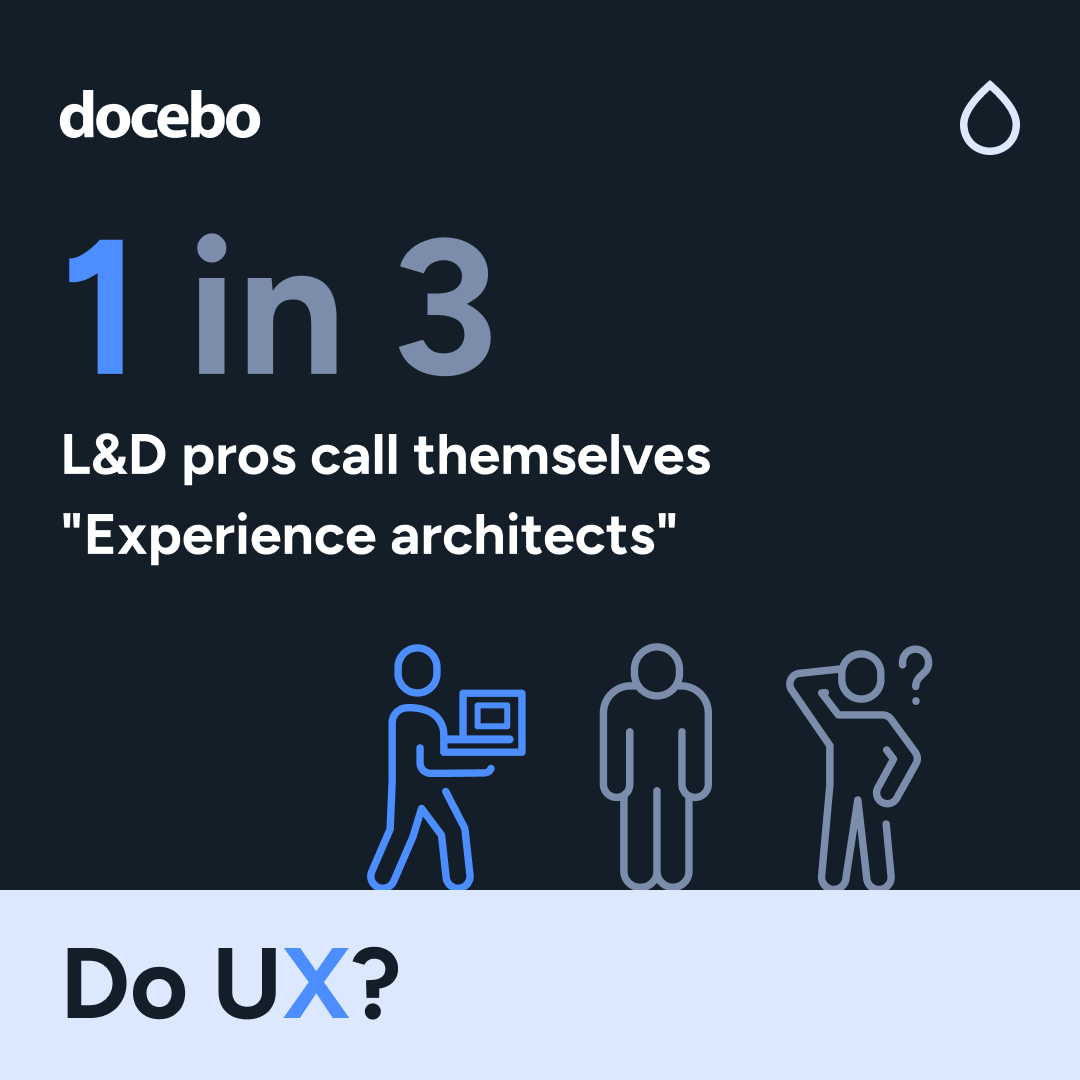What you’re reading: The Docebo DRIP drop. Every two weeks, we release fresh, data-packed insights from our Data, Research, and Insights Program (DRIP). Expect hard stats, sharper truths, and takeaways you can use right now to elevate L&D.
The next gen of L&D pros has a new title: “Experience architect.”

These aren’t the L&D leaders of the past, obsessed with compliance checkboxes and course completion rates. They’re designing holistic learning experiences that change behavior and drive business outcomes.
L&D leaders finally have a seat at the business table. Stakeholders are asking harder questions about learning ROI, and generic training programs aren’t cutting it anymore.
The result?
A new breed of L&D professional who thinks like a product manager, designs like a UX expert, and measures like a data analyst.
Instead of asking “Did people complete the training?” they’re asking “Did this experience change how people work?” Instead of tracking engagement metrics, they’re measuring business impact.
But here’s the problem: The tools aren’t keeping up with the ambition.
61% are sick of clunky, chaotic platforms that frustrate learners and admins alike.
Another 31% are “Efficiency Seekers,” chasing platforms that automate, streamline, and eliminate manual grunt work. They understand that time spent on administrative tasks is time stolen from strategic work.
These experience architects know that good UX isn’t a bonus—it’s the battleground where learning programs succeed or fail.
The bottom line
User experience isn’t a nice-to-have. It’s the foundation of effective learning.
If you’re still thinking about learning as content delivery, you’re already behind. The future belongs to experience architects who understand that great learning feels less like training and more like growth.